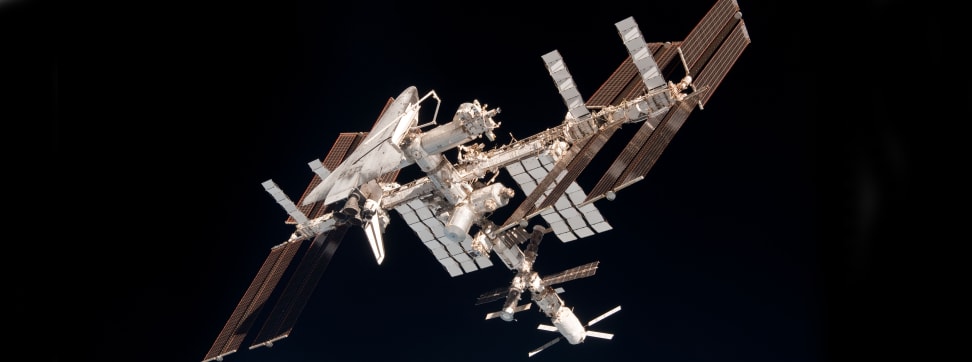 Credit:
Credit:
Recommendations are independently chosen by Reviewed's editors. Purchases made through the links below may earn us and our publishing partners a commission.
When astronauts’ clothes get dirty, what do you suppose they do? There’s no laundry in space, and only limited room for extra clothes. Surely those clever minds at NASA must have thought of something, right?
Well, actually, no—there really isn’t a solution to the problem. And yes, it’s a serious one. Stays aboard the International Space Station last up to six months, and the duds required to clothe just six ISS residents add some 900 pounds of freight to the typical space launch. That means conserving garments is serious business.
It's also potentially uncomfortable for the space station's residents. ISS astronauts are instructed to wear their underwear for up to a week before changing to a clean pair. Of course, the temperature-controlled atmosphere of the ISS is much cleaner than Earth’s, and the lack of gravity means clothes don't stick to their bodies as much. But astronauts do have to exercise frequently to prevent muscle atrophy. Imagine sweating in zero gravity!
So what’s a poor, filthy astronaut to do?
An ongoing NASA study hopes to find a solution in antimicrobial clothing. The high-tech exercise attire is actually normal Earth-wear that's either been treated with an antimicrobial compound or produced from antimicrobial yarn.
{{brightcove '3679947673001'}}
A load of the treated clothes was shipped to the ISS this week onboard a resupply vessel called Cygnus, owned by Orbital Sciences Corp—a private space venture that, along with Elon Musk’s SpaceX, is charged with resupplying the ISS after the discontinuation of NASA’s shuttle program.
Interestingly, the antimicrobial compounds are already commercially available. So, if successful, you may soon be able to shop for NASA-approved running shorts. NASA's study also points out that treated clothing might be perfect for people in parts of the world where access to laundry facilities is limited.
But this new study won't be completed until next March. You might be asking: What are NASA and other space agencies doing in the meantime to keep their astronauts' garb sufficiently clean?
Well, some astronauts have discovered clever ways to clean their threads. Former NASA astronaut Ken Bowersox claimed to have developed a way to wash his shorts using a plastic bag. But for the most part, ISS residents simply keep wearing the same clothes over and over. Don Pettit, for example, was known to wear the same shorts for months at a time.
When the clothes finally get too stanky to bear, there's a more... dramatic solution. Astronauts aboard the ISS incinerate their dirty laundry through atmospheric reentry.
The Russian Space Agency’s Progress resupply vessels are non-reusable, meaning they only conduct one-way trips to the ISS and then burn up upon reentry into Earth’s atmosphere. Before they depart the station, they're loaded with trash—including astronauts' clothes. In other words, you're probably being gently showered with a tiny quantity of ash from some spaceman's dirty undies. Pretty awesome, if you ask me.
There have been a few other creative solutions. In an effort to grow some tomato and basil plants, Don Pettit once folded an old pair of underwear into a sphere to use as a planter. The idea was remarkably resourceful, considering the lack of soil aboard the ISS.
“It works very well for its intended purpose,” Pettit wrote in his Space Chronicles. “It also makes a wonderful sprouter."
Russian scientists have also tried using special kinds of bacteria to literally digest cotton and paper underwear. Theoretically, the methane produced by the related biochemical reactions could also be harnessed to power spacecraft. But the offbeat idea was never actually put into use, since it could take up to a decade to determine the right combination of bacteria for the job.
In all, the problem of dirty laundry in space highlights one of the most interesting things about human space travel: It’s the little things—the unforeseen things—that tend to cause the biggest problems.

